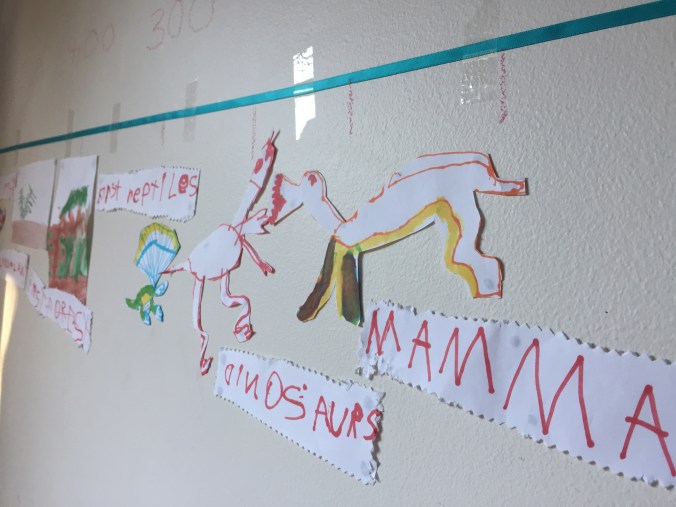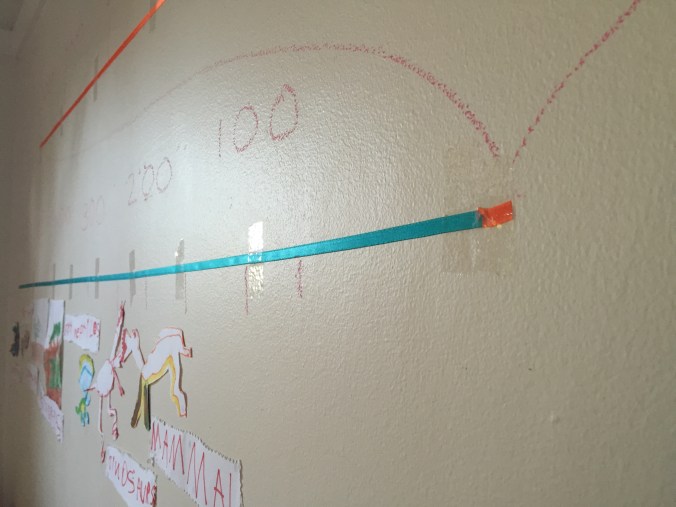Mummification is a great science and history lesson if you are willing to venture into the grim topic of death with your tots. Plus, it’s surprising less complicated than you might think:


First pick an apple. We are lucky enough to have a very prolific crabapple tree, however if your apples are full sized you may wish to quarter the apple for a speedier result.
Once your apple is selected, carve a face in the skin (for ease we used toothpicks to carve ours).

Grab the scales and measure some bicarbonate soda. (The exact amount you need will depend on how many apples you are covering, how large the apples are and how small the cups you are placing them are.) we used 140g of bicarbonate soda (as it was an easy number to multiply) and this covered 3 crabapples in coffee shot cups.

Once you know how much bicarbonate soda you have, add twice as much cooking salt (the ratio of 1bicarb:2salt is a good one to work out with the kids – for our 140g of bicarbonate soda we added 280g of salt.)
Mix well. Then place your carved apple in the cup and cover in your powdery mixture.

We also carved a second apple as a control for our experiment. This one will sit in another cup next to the covered apple (and will likely start to rot, while the salted apple dries out.)
Leave on the bench uncovered for about 10 days and then assess what has happened to each apple.

You may wish to visit the real Egyptian mummy at Tasmanian Museum and Art Gallery while you wait for your apple to mummify. (While other little girls love the butterfly’s displayed in the central gallery, my girls stand next to them pointing at the casket in the dark and announce with pride that ‘there is a dead mummy in there!’ We have had a bit of explaining to do when other kids are with us…)
Here’s a brief history you may wish to share with your tots as you go through this process. (As always, if they have questions make a point of finding the more detailed information together, it is better to model the methods for finding out than to always know the answers!)
Back before the time of the pyramids it is believed that the Egyptians berried their dead in the hot desert sands and the bodies would dry out. At the time this was thought to be good because it was important to the Egyptians that the body remained intact… but there was a problem with wild animals eating the dead bodies (yuck!). It was decided to place the dead in cases so the animals couldn’t dig them up and eat them. This stopped the animals, but meant the body decayed in the box, rather than drying out. Because the Egyptians believed it was important to preserve the body after death they began to dry out the bodies – before burying them. Over time this developed into the sacred art of mummification. It was later that the Egyptians built huge pyramids to house the mummified bodies of their rulers.
A fun fact is that the Egyptians discarded the brain, during the mummification process, but kept the heart – thinking the heart was the organ responsible for thought, and like many religions today; only a pure heart would be allowed into the afterlife.
Now, as I have talked about before, (without my promoting) my kids think about far death more than I expect is average, and this is why I am happy to venture into this topic (to normalise something they already think about.) If you feel this kind of information is not beneficial for your young people, or that it will raise issues that they are not ready to process, then simply save it for another age. Otherwise, happy mummifying!




















 Happy Easter holidays! Here’s a lovely little activity to do for Good Friday (durable for the whole family, and no shopping required, all you need is an egg, a pin and some paint – or pens etc).
Happy Easter holidays! Here’s a lovely little activity to do for Good Friday (durable for the whole family, and no shopping required, all you need is an egg, a pin and some paint – or pens etc).
























